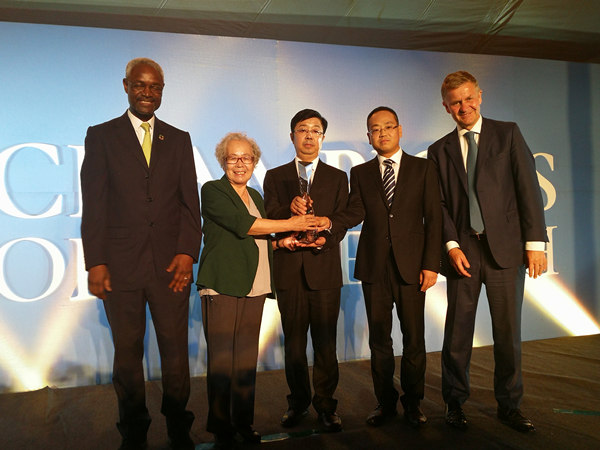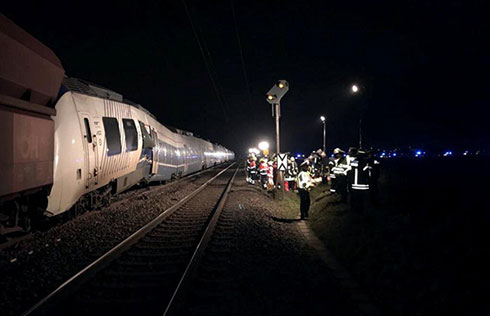

Western multinationals no longer dominate foreign investment and trade across borders. More and more firms from Asia are going global. According to United Nations data, between 2005 and 2006, China's outward investment increased by 32 percent to $16 billion, one of the fastest.
State-owned companies are responsible for the bulk of China's overseas investments. But does this mean that smaller private companies are left out? No, foreign investment in most sectors shows a pattern: large investment s by a few big firms, and numerous small investments by small firms. Small and mid-size companies have also been going global.
Cross-border interactions
What does 'going global' mean for small and mid-sized companies? It means recognizing and structuring cross-border interactions as part of the firm's business. These interactions can take many shapes. A firm can have customers, distributors, or suppliers in foreign countries. One can spread business functions, commonly done in services such as outsourcing. One can pursue a financial strategy, spreading assets under different jurisdictions through hedge risks.
But small and mid-sized companies are more likely to follow a haphazard path; that is, they often do not approach globalization strategically. Part of this relates to a lack of strategy resources and capabilities, both in terms of personnel and information. An article in China Daily by You Nou ("Businesses lack of useful information," March 3, 2008) shows that here is acute lack of information about how to go global.
Large, resourceful companies can get information on globalization, but only at substantial cost. They can employ large consulting firms to conduct research on a global scale. They can hire specialists on specific markets. They also have a bigger cushion for trial and error.
Substantial risks
Can smaller firms afford to neglect globalization due to lack of information? The world economy is evolving in such a way that globalization is no longer an option. Even those midsize firms that play exclusively in the domestic Chinese market need to develop an understanding of how the external economy impacts them. And their domestic strategies need to be renewed periodically in light of this understanding. This is becoming critical for success in highly competitive markets.
The first part of this understanding relates to risk. Unlike many other governments, China has successfully cushioned the economy from external risks, a success that has earned it laurels since the Asian Financial Crisis in the late 1990s. But the global economy has evolved. Risks are increasingly intertwined; they now spread more rapidly from one region to another. Any government will find multiple risks, from oil prices to food inflation to political instability, harder to manage simultaneously.
This environment is particularly threatening to midsize firms. The first part of their globalization strategy, therefore, should be informed by a strategic risk management approach. It requires a bit of research into understanding overall risks to the firm, the industry and the economy, the level of control over these risks, strategies to mitigate them, and implementing a flag-raising mechanism that kicks in toward suggesting alternative strategies when risks increase.
Global opportunities
Beyond risk, the global economy, of course, offers manifold economic opportunities. To maximize them, a midsize firm will once again need to put on its strategic hat. It will need to juggle multiple geographies and products, and understand and manage them on a timeline from present to future.
But doing this successfully requires two fundamentals that mid-market firms in emerging economies cannot take for granted. The first is information, as noted earlier.
While information sources are not available easily in the public domain, there are boutique firms that specialize on providing information on how to go global, from marketing and selling, to tax, laws, and regulations, to organizational structure and communication, to infrastructure needs, and to managing people.
The second is a strategic mindset or capability. An example will make this clear. To make use of global opportunities, many firms decide to acquire another firm abroad. But acquisition is the easy part. Most firms struggle to manage the post-acquisition reality because they have either not thought through the strategies or neglected to build the capabilities ahead of time. And so, almost 70 percent of all mergers and acquisitions fail to deliver the intended results. Here, too, specialized consulting firms that focus on capacity development in a global context can help.
Like it or not, the world economy is a reality even for domestic-focused firms, and the value of global information and strategy is something that mid-size firms can no longer afford to ignore.
The author is an assistant professor of international relations at the University of Massachusetts, Boston, USA, and a Principal at Red Bridge Strategy Inc, a specialist consultancy that helps clients develop globalization strategies. The views expressed in the article are his own.
(China Daily 05/19/2008 page6)













